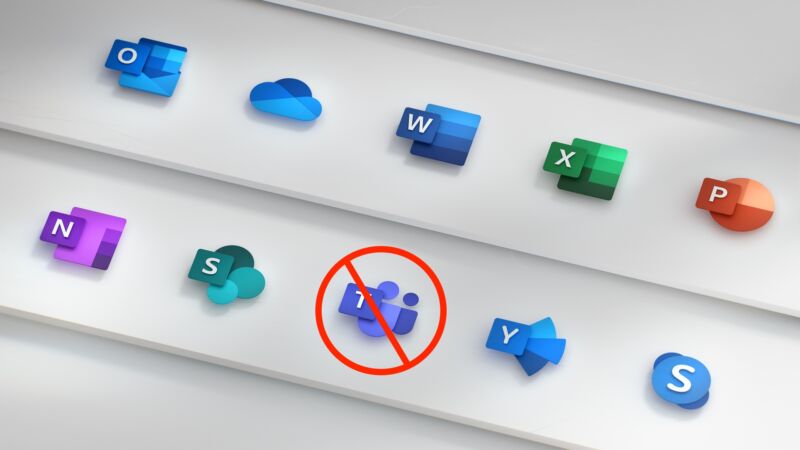different teams —
Changes may save a bit of money for people who want Office apps without Teams.
Andrew Cunningham – Updated

Enlarge / Teams is being decoupled from the other Office apps worldwide, six months after Microsoft did the same thing for the EU.
Microsoft/Andrew Cunningham
Months after unbundling the apps in the European Union, Microsoft is taking the Office and Teams breakup worldwide. Reuters reports that Microsoft will begin selling Teams and the other Microsoft 365 apps to new commercial customers as separate products with separate price tags beginning today.
“To ensure clarity for our customers, we are extending the steps we took last year to unbundle Teams from M365 and O365 in the European Economic Area and Switzerland to customers globally,” a Microsoft spokesperson told Ars. “Doing so also addresses feedback from the European Commission by providing multinational companies more flexibility when they want to standardize their purchasing across geographies.”
The unbundling is a win for other team communication apps like Slack and videoconferencing apps like Zoom, both of which predate Teams but haven’t had the benefits of the Office apps’ huge established user base.
The separation follows an EU regulatory investigation that started in July of 2023, almost exactly three years after Slack initially filed a complaint alleging that Microsoft was “abusing its market dominance to extinguish competition in breach of European Union competition law.”
In August of 2023, Microsoft announced that it would be unbundling the apps in the EU and Switzerland in October. Bloomberg reported in September that Zoom had met with EU and US Federal Trade Commission regulators about Microsoft, further ratcheting up regulatory pressure on Microsoft.
In October, Microsoft European Government Affairs VP Nanna-Louise Linde described the unbundling and other moves as “proactive changes that we hope will start to address these concerns in a meaningful way,” though the EU investigation is ongoing, and the company may yet be fined. Linde also wrote that Microsoft would allow third-party apps like Zoom and Slack to integrate more deeply with the Office apps and that it would “enable third-party solutions to host Office web applications.”
Microsoft has put up a blog post detailing its new pricing structure here—for now, the changes only affect the Microsoft 365 plans for the Business, Enterprise, and Frontline versions of Microsoft 365. Consumer, Academic, US Government, and Nonprofit editions of Microsoft 365 aren’t changing today and will still bundle Teams as they did before.
Current Office/Microsoft 365 Enterprise customers who want to keep using the Office apps and Teams together can continue to subscribe to both at their current prices. New subscribers to the Enterprise versions of Microsoft 365/Office 365 can pay $5.25 per user per month for Teams, whether they’re buying Teams as standalone software or adding it on top of a Teams-free Office/Microsoft 365 subscription.
For the Business and Frontline Microsoft 365 versions, you can either buy the version with Teams included for the same price as before, or choose a new Teams-less option that will save you a couple of dollars per user per month. For example, the Teams-less version of Microsoft 365 Business Standard costs $10.25 per user per month, compared to $12.50 for the version that includes Teams.
Updated April 1, 2024, at 4: 12 pm to add more details about pricing and a link to Microsoft’s official blog post about the announcement; also added a statement from a Microsoft spokesperson.